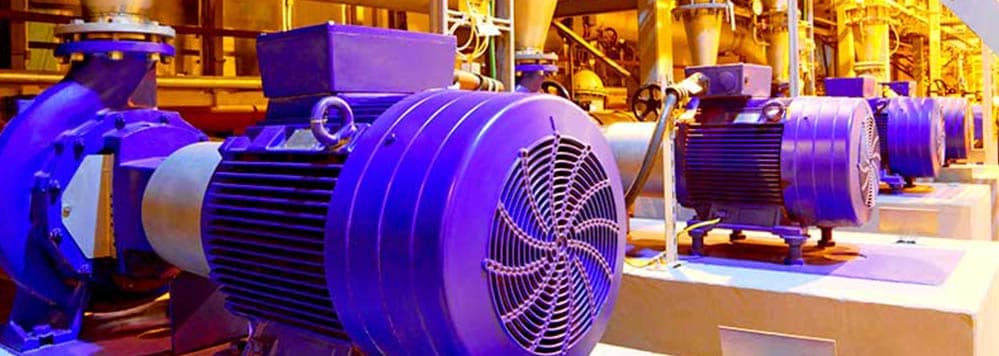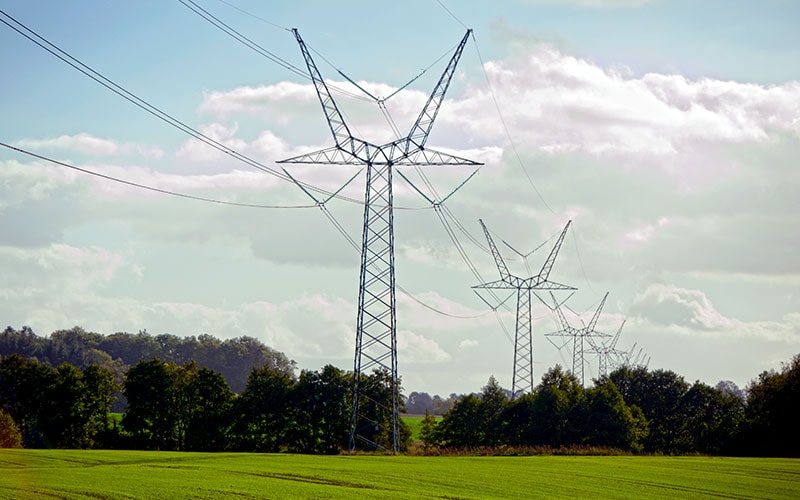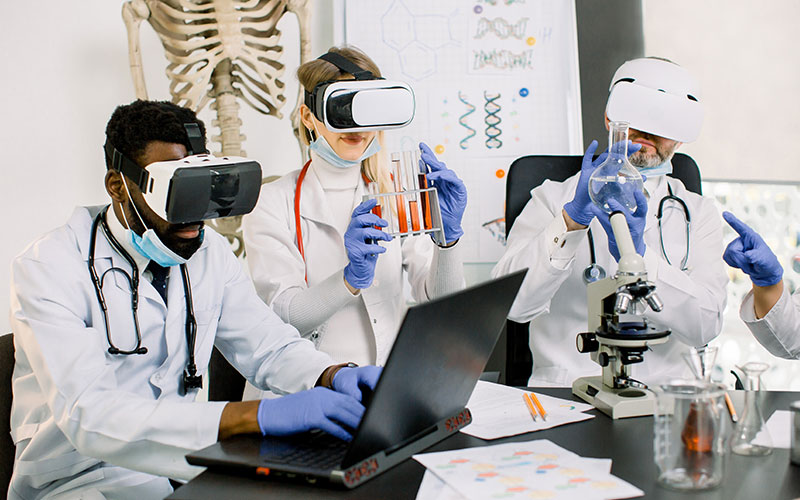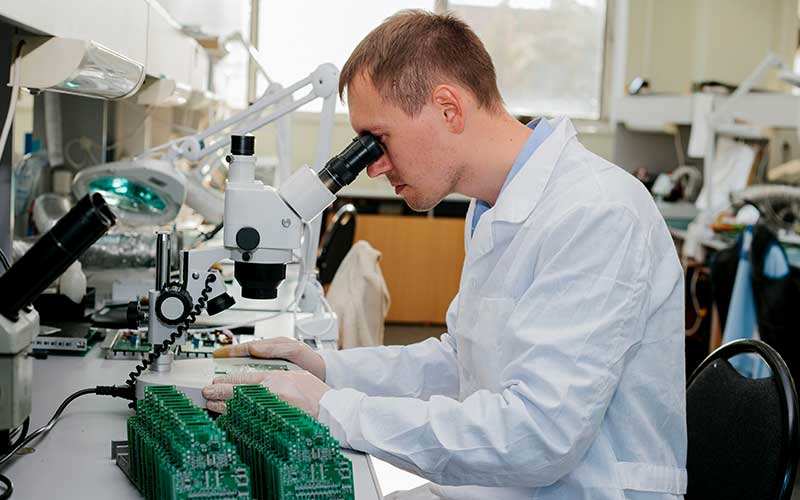But the COVID-19 pandemic has made operating and maintaining this equipment challenging due to the risks of transmission of the virus person-to-person and logistical challenges for sourcing parts.
A centralized digital platform can help support remote equipment operations, including customer services and parts supply as well as providing the consumables and information required for efficient working of the machinery.
Equipment vendors can offer customer services from installation and commissioning to ongoing operation, planned maintenance, breakdown fixes, upgrades and end-of-life management from a central location, without their exposure to health risks in the field. Parts can be produced as close to the customer as possible.
“Providing 24/7 care to ships sailing around the world with onboard and remote services is an integral part of our ‘Electric. Digital. Connected’ approach,” said Juha Koskela, managing director, ABB Marine & Ports.1 A remote approach provides cost-effective social distancing to avoid human-to-human spread of the virus. The valuable expertise of technicians is utilized effectively and at scale.
The customer service digital ecosystem is an integrated environment where suppliers, product makers, distributors, dealers, service providers, and customers work toward a common objective, maximizing the overall value from the equipment to the triple bottom line of financials, sustainability, and society (Figure 1). Each of these value chain partners offer a distinct perspective and capability, at each step in the value chain.
Figure 1. Key trends in digitization in the industrial equipment sector for remote service
Source: Infosys Knowledge Institute
The digital platform integrates these stakeholders with technologies. It is modular in nature, with the capability to plug in individual components. The network effect increases the value of the ecosystem and its offerings with the addition of each user in the local community to the platform.
Mobility connects people for last mile connectivity and anytime, anyplace access to equipment status. The internet of things connects equipment to track their critical parameters, take timely action and maximize their uptime. Analytics generates deep insights for decision making from the equipment parameters. Mixed reality creates a virtual environment for expertise to be passed bi-directionally from a remote site to the equipment maker and back. 3D printing produces physical parts for spares from digital models. Regular monitoring of health parameters for the humans certifies them for their readiness to work.
Infosys conducted a digital outlook study in 2018 among more than 1,000 global business leaders. As reported from the study, the three technology areas that will attract the most investment in industrial manufacturing in the next few years were the following: 1) the industrial internet of things (for 71% of study participants), 2) 3D printing of spare parts (68%), and 3) artificial intelligence and optical character recognition to manage contracts (67%).2 The following sections explain specific trends in the adoption of these technologies for positive business impact.
Consolidate assets for network effect
Industrial equipment makers have traditionally sold their products and services through a B2B business model, through agents and dealers. Digital technologies offer an approach which engages directly with end customers for transformation to a B2C model. But end customers are usually fragmented, and the affordability of equipment is an issue for small and medium retail customers.
Asset and customer consolidation creates a network effect increasing the platform value
To address the issue, the digital platform is a secure, multi-layered architecture that consolidates sensors, devices, networks, data, and applications. It provides access to customers for shared, on-demand usage of equipment instead of a one-time purchase. Consolidation of assets and customers produces a network effect which increases the value offered by the platform with the volume of users. The platform acts as a marketplace to match demand and supply for shared product usage. The utilization of the installed base increases. The result is a hybrid B2B2C model, a combination of B2B and B2C.
JCB’s Livelink is an example of shared product usage with the internet of things and mobility.3 Livelink is the fleet monitoring system initially implemented for JCB’s own agricultural and construction equipment to monitor the location and critical operating parameters. The versions have interoperability to help mixed-fleet operators integrate data from non-JCB equipment, as long as they comply with the Association of Equipment Management Professionals Telematics Standard V1.2. When consolidated on a single secure web platform, the data generates recommendations to optimize fleet performance and overall utilization. Livelink tracks equipment usage and key vehicle parameters for timely maintenance alerts. JCB reported a 20% increase in output due to reduction in idle time from ongoing fleet management.
Conduct in-depth analysis for industry-specific insights
The analysis of equipment data collected with the internet of things sensors does not end with improved utilization of products and fleets. The application of advanced analytics like big data and domain knowledge to the data generates industry-specific deep insights that would not have been generated otherwise. Optimized fuel burn in power plants improves their efficiency, which drives the operating margin. Pattern matching, when applied to critical parameters, is an effective approach for preventive maintenance, first proactively sensing for failure modes and then recommending timely fixes.
An oil and gas client experienced excessive slurry equipment failure, resulting in high cost and loss of shale gas production.4 By combining analytical expertise with turbo-machinery domain knowledge, they identified causal relationships to analyze sensor data for critical parameters. The data was segregated into two groups (prior and post-failure), cleansed, and divided into homogeneous clusters to identify trends in each cluster. An artificial intelligence-based prediction model was built to predict breakdowns a week ahead to prepare for maintenance procedures proactively. The model accurately matched with actual failure of the equipment 90% of the time.
Advanced data analytics application provides deep industry-specific insights
Visualize complex systems for contactless support
For complicated situations that need service, data and analytics alone will not be sufficient. Visualization technologies like a smartphone, a tablet, or a 2D/3D mixed-reality headset will be required for the expert to look at the product and decide depending on the situation and severity. Mixed reality, the combination of augmented and virtual reality, has reached sufficient levels of maturity and affordability for use in remote customer service. With the post-COVID-19 situation requiring remote work without human-to-human contact, AR/VR provides digital connectivity along with three-dimensional rendering for complex assets.
Leading design software firm PTC states that 2018 was a breakout year for AR/VR adoption to scale up from pilots to production to achieve workforce optimization and operational efficiencies. Industrial manufacturing is the industry vertical that uses AR/VR technology the most due to the skilled labor shortage coupled with the high cost and cycle time for training employees on complex systems. Agricultural products manufacturer GSI has a complex portfolio of grain storage systems and a dizzying set of configurations. The combination of complexity and option volume made training difficult and comprehensive product information hard to share. The firm used AR to train field workers and convert from paper-based manuals and in-person training. GSI reduced installation time by 60% and the efficiency translated to bottom-line profitability.5
A global engineering and services client struggled with unplanned outages for complex elevator systems. Beyond the high cost of repair, customer satisfaction plummeted as patrons suffered delays in personal movement. The team designed and implemented remote device monitoring as part of a centralized facility. This command center monitors and provides remote intervention and request fulfillment on a 24/7 basis for critical connected devices. They found that half the issues were candidates for remote resolution. Four types of services are monitored: routine calls, high-volume calls, data links, and configuration management. Routine calls are a regulatory requirement to ensure ongoing communication between the devices and the central server. When the frequency of calls exceeds a threshold due to specific situations, it becomes a high-volume call that needs attention.
The data link is the combination of events conveyed using specific fault codes and equipment parameters. It enables preventive maintenance, optimizing equipment utilization. It also improves configuration management, which is useful for installing new equipment without requiring an on-site technician. Remote monitoring services are replicated and over time can increase the share of issues that can be resolved remotely.
On-demand 3D-printed spare parts
No purely digital technology can substitute the need to replace a broken part. 3D printing creates a physical part from a digital model of its geometry. Additive manufacturing or 3D printing started its evolution from rapid prototyping applications in the 1990s. The technology is now mature enough to produce parts for critical applications and from metals, not just plastic. This benefits the aftermarket segment to produce spare parts, as close to the point of use as possible, avoiding equipment downtime while waiting for the part.
Caterpillar uses 3D printing for low-volume service parts and for parts where the supply chain has been disrupted. It plans to use the advancements in this technology for a permanent solution in on-site part creation using this technology.6
Authorize to work with digital passport
Qualified professionals need to be certified for their skill set and for their health condition in all industries, but more importantly in industrial equipment due to the criticality of equipment field service. This certification can be carried out at different frequencies based on the technical skill sets required to operate and service equipment. Regular, ongoing upgrades to products and standard operating procedures on a quarterly or monthly basis require a trained, updated workforce. During a crisis like the COVID-19 pandemic, health monitoring as frequently as daily for key parameters such as body temperature, blood pressure, and pulse rate is essential to avoid any chance for human-to-human spread of infections.
Certification for skill set and health conditions becomes especially important in industrial equipment due to the field’s criticality
A literal example of this in the field can be seen in agriculture. The Agricultural Industry Electronics Foundation (AEF) is a consortium of leading agricultural equipment makers which promotes interoperability of onboard equipment data. In 2019, they rolled out Data Connect as an interface for multiple-brand agricultural equipment to share data with farmers. This creates a network effect, as the more brands and vehicles involved, the bigger the benefit for end users and farmers.
When the industry develops a consortium like AEF for agriculture, it realizes the promise of shareable equipment data, irrespective of the equipment producer and the control system. These consortiums evolve into true digital ecosystems, with people and products in communication with each other to achieve the overall goals that the customers expect.
References
- ABB increases remote support for ships to help customers during the COVID-19 outbreak, April 08, 2020, ABB Press release.
- The digital industrial revolution is here, 2018, Infosys.
- JCB LiveLink.
- Predicting equipment failure, Infosys.
- The State of Industrial Augmented Reality 2019.
- Additive Manufacturing, Caterpillar.






